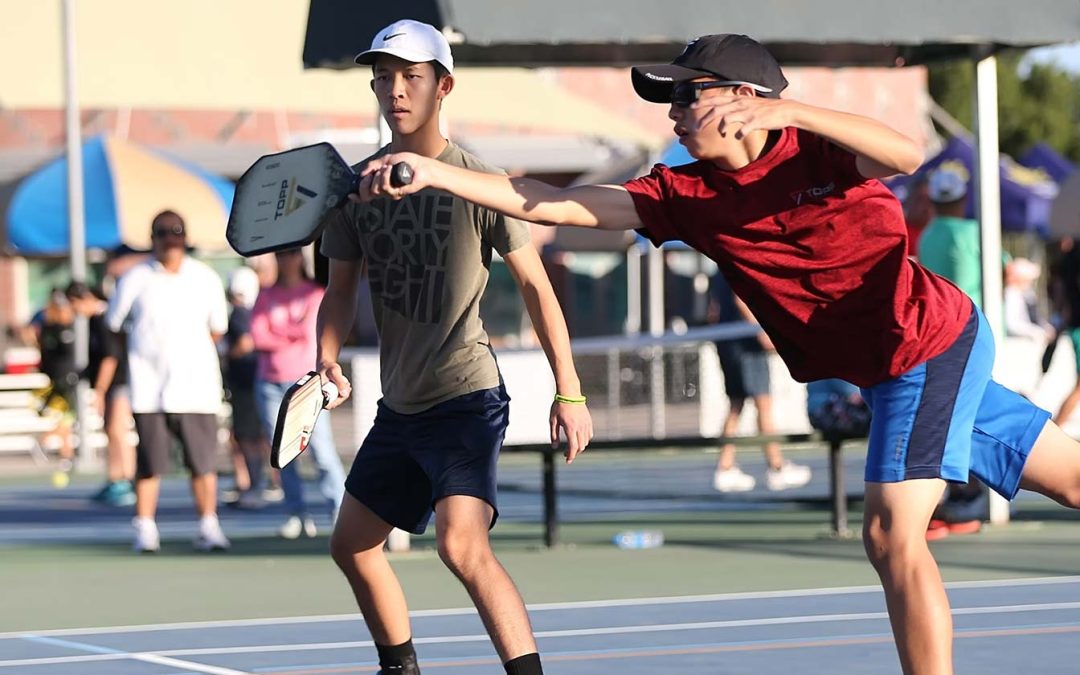As any player continues to grow in the sport of pickleball, one consideration to playing
style and strategy is how the player grips the paddle.
The most common grip is known as the “Continental Grip.” This grip can be easily
categorized as the most neutral grip in Pickleball, as it is used for both a forehand and
backhand. To achieve a basic Continental Grip, place the knuckle part of your index
finger with the heel of your hand on the second (or first for more reach) bevel of your
paddle handle. It should feel similar to holding a hammer. From this grip set up, you
can adjust the pressure of your hand around the handle to create a more or less
powerful shot. When a player is learning control, the grip is the key element to
increasing skill. If you are holding the paddle too tight, you will create rigid movement
that will be more difficult to control.
Another grip style is the “Western Grip” which is popular with players who like to add
topspin to their shots. By placing your flat on the handle and rotating the paddle 60 – 90
degrees towards the ground, you can accomplish a Western Grip. To most, this feels
awkward. Some players will switch to this grip then back to the Continental Grip. For a
newer player, switching grips is the least of their worries, but it is worth giving a try as
you increase your arsenal of shots. The one drawback to this grip is it can make
dinking, slicing, or backhands more challenging.
Of course, if there is a Western Grip, there must be an Eastern Grip too. This is a
comfortable forehand grip, which is particularly popular with beginners. Place your
hand on the face of the paddle flat, drag it down to the paddle handle, and wrap your
fingers around. Pretty simple and is a great place to start! This grip is designed more
as a starting point, so make sure you continue to try the Continental Grip as you
progress.
There are no “right or “wrong” choices in grips but a lot of the struggles players have
can be attributed back to using the wrong group when approaching a shot. Some grips
naturally encourage a novice player to increase their grip pressure, which does not lead
to favorable results for every shot.
Grip pressure is a basic concept but can be challenging to execute when in a heated
battle at the net. A lot of players get stuck in a certain skill level because their grip
pressure is not properly managed. For example, when dinking, you want a relaxed
shoulder and grip pressure. If you are holding too tight to the handle of your paddle,
you will certainly add too much power, which can easily be used against you or your
partner. When making a power shot, gripping the paddle handle tighter transfers the
power of your core, as opposed to just slapping at the ball.
Players have to continually be open to trying new things. The smallest things, such as
paddle grip, can make a difference in a player’s growth rate. Ideally, find a setting to
play or drill where you can try new things without the pressure of “showing you can play
pickleball well.” I always tell players when they are learning new concepts, “be
prepared to lose games now to win games later.” Small dynamics, such as grip, turn
into real results.


Recent Comments